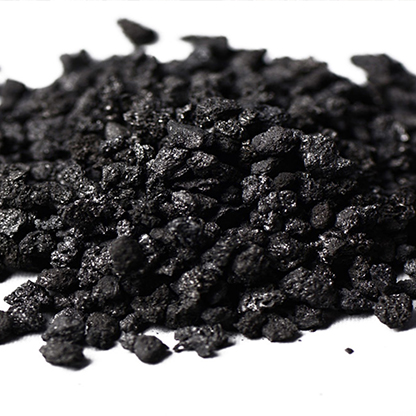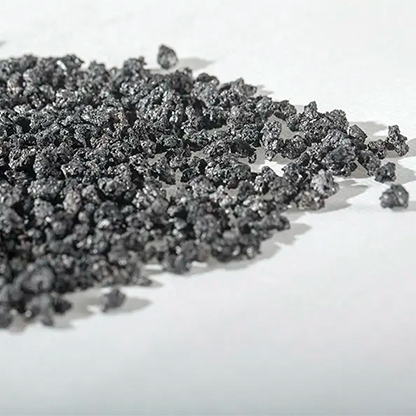Products Partgowal
Carbon Materials and Fluxing Agents
High Sulfur Graphite
CPC

High sulfur graphite petroleum coke is a carbon-rich material produced through the calcination of petroleum coke, characterized by a relatively high sulfur content. Due to its high carbon value and lower cost compared to low-sulfur types, it is used in specific foundry applications and cast-iron production where sulfur sensitivity is lower.
Characteristics of High Sulfur Graphite Petroleum Coke:
• High carbon content (85% to 95%)
• Higher sulfur content compared to low-sulfur grades
• Cost-effective for applications less sensitive to sulfur
• Acceptable electrical conductivity
• Graphitic crystalline structure
Applications of High Sulfur Graphite Petroleum Coke:
• Carbon additive in melting processes of gray and ductile cast iron
• Utilized in heavy-duty foundries and cast-iron manufacturing plants
• Suitable for operations with lower sulfur purity requirements
• Used in the production of low-cost carbon electrodes
Low Sulfur Graphite
GPC

Low sulfur graphite petroleum coke is a graphitized coke with extremely low sulfur content. Due to its high carbon purity and minimal impurities, it is widely used in high-grade and sensitive applications such as advanced steelmaking and high-quality ductile iron production.
Characteristics of Low Sulfur Graphite Petroleum Coke:
• Very high carbon content (98% to 99%)
• Extremely low sulfur (less than 0.05%)
• Low ash content
• Excellent electrical conductivity
• Fully developed graphitic crystalline structure
• High thermal and chemical resistance
Applications of Low Sulfur Graphite Petroleum Coke:
• Production of special steels and sensitive alloys
• Carbon addition in precision foundries and high-quality ductile iron manufacturing
• Used in the production of advanced graphite anodes
• Applied in industries requiring high carbon purity and minimal impurities
• Battery manufacturing, precision metallurgy, and refractory industries
Coke
C

Coke is a carbon-rich material produced by heating high-grade coal in the absence of air (a process known as coking). It is primarily used in metallurgical industries, particularly in the production of steel and cast iron, serving as both a fuel and a reducing agent.
Types of Coke by Application:
• Metallurgical Coke:
Mainly used in blast furnaces for steel production.
• Petroleum Coke (Pet coke):
A by-product of crude oil refining, used in aluminum production, electrode manufacturing, and as an energy source.
• Chemical Coke:
Utilized in the production of chemical compounds.
• Foundry Coke:
Designed for cast iron foundries, featuring larger size and high resistance to breakage.
• Breeze Coke:
Very fine particles, used as fuel in small-scale industries or in thermal processes.
Coke Size Classification:
• 80–150 mm: For cast iron foundries
• 25–80 mm: Primary size for blast furnace use
• 10–25 mm: For use in smaller furnaces
• Less than 10 mm: Used as fuel or in specialized processes
Characteristics of Coke:
• High carbon content (85% to 95%)
• Very high calorific value
• Good mechanical strength (resistance to crushing)
• Low volatile matter
• Adequate thermal conductivity
• High resistance to thermal shock and elevated temperatures
Applications of Coke:
• Primary fuel in blast furnaces for pig iron production
• Reducing agent in metallurgical processes for metal extraction from ores
• Used in ferroalloy industries for the production of materials like ferromanganese and ferrochrome
• As a raw material in the synthesis of certain industrial chemicals
• In aluminum smelting (calcined petroleum coke)
